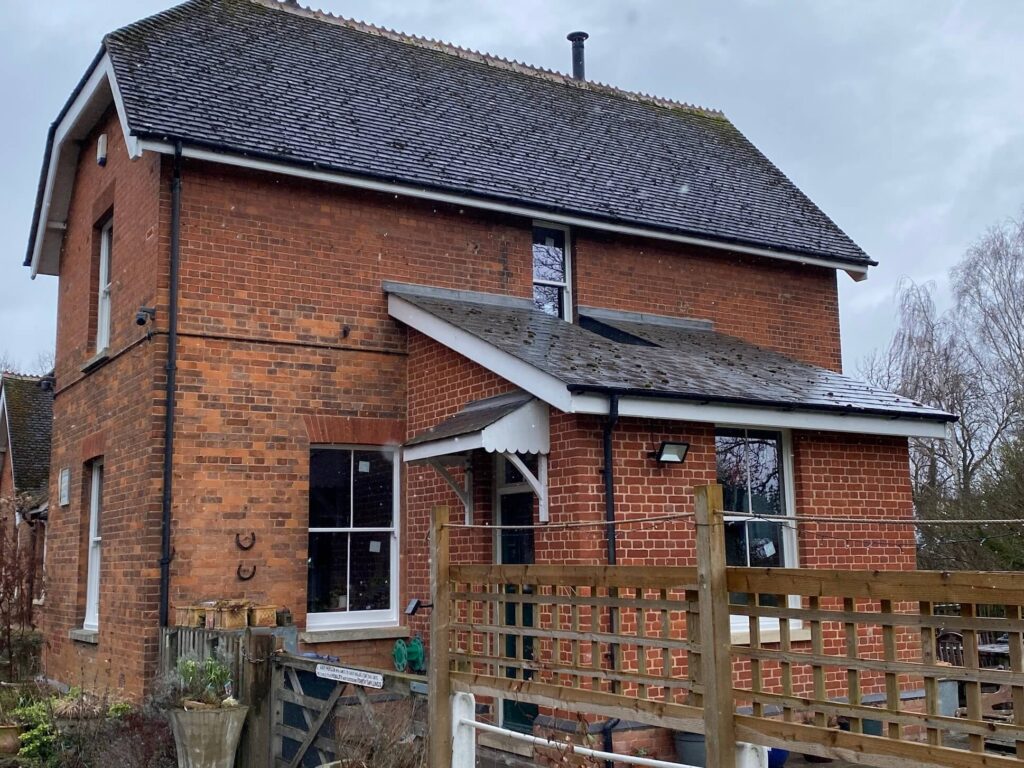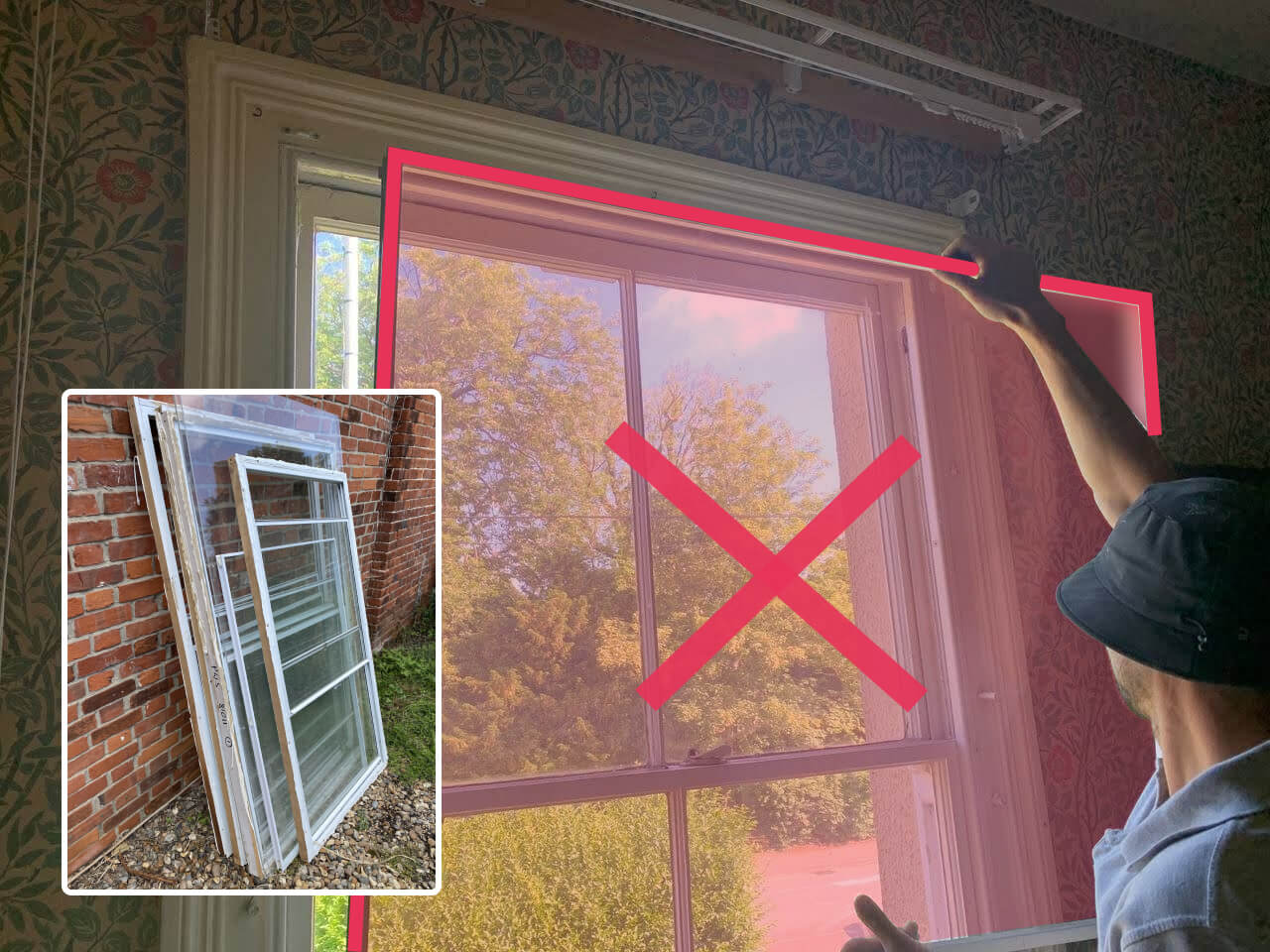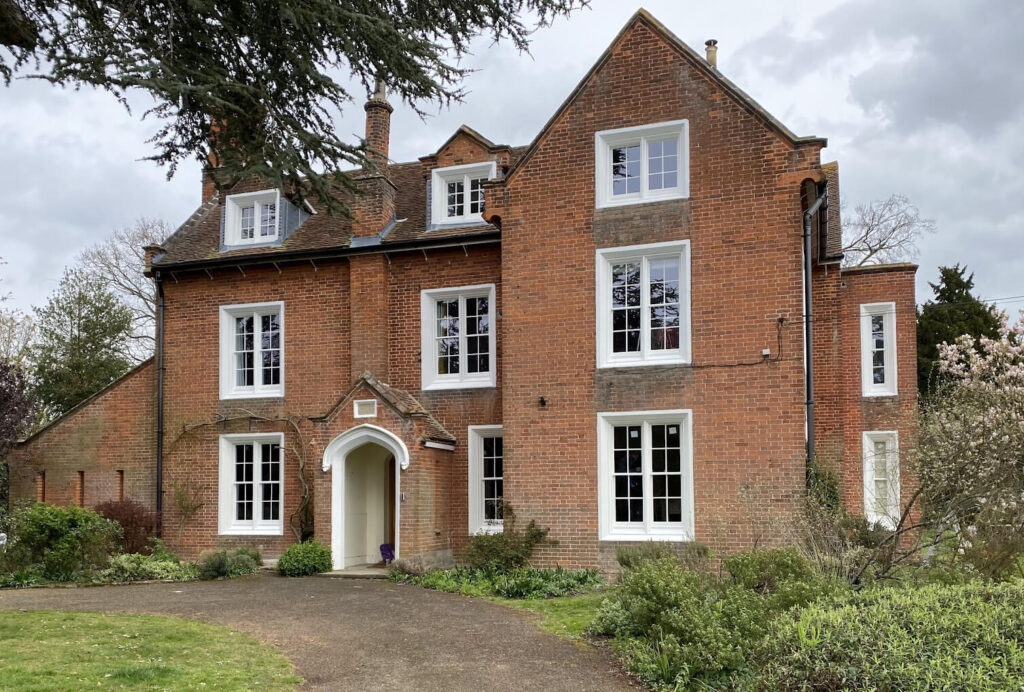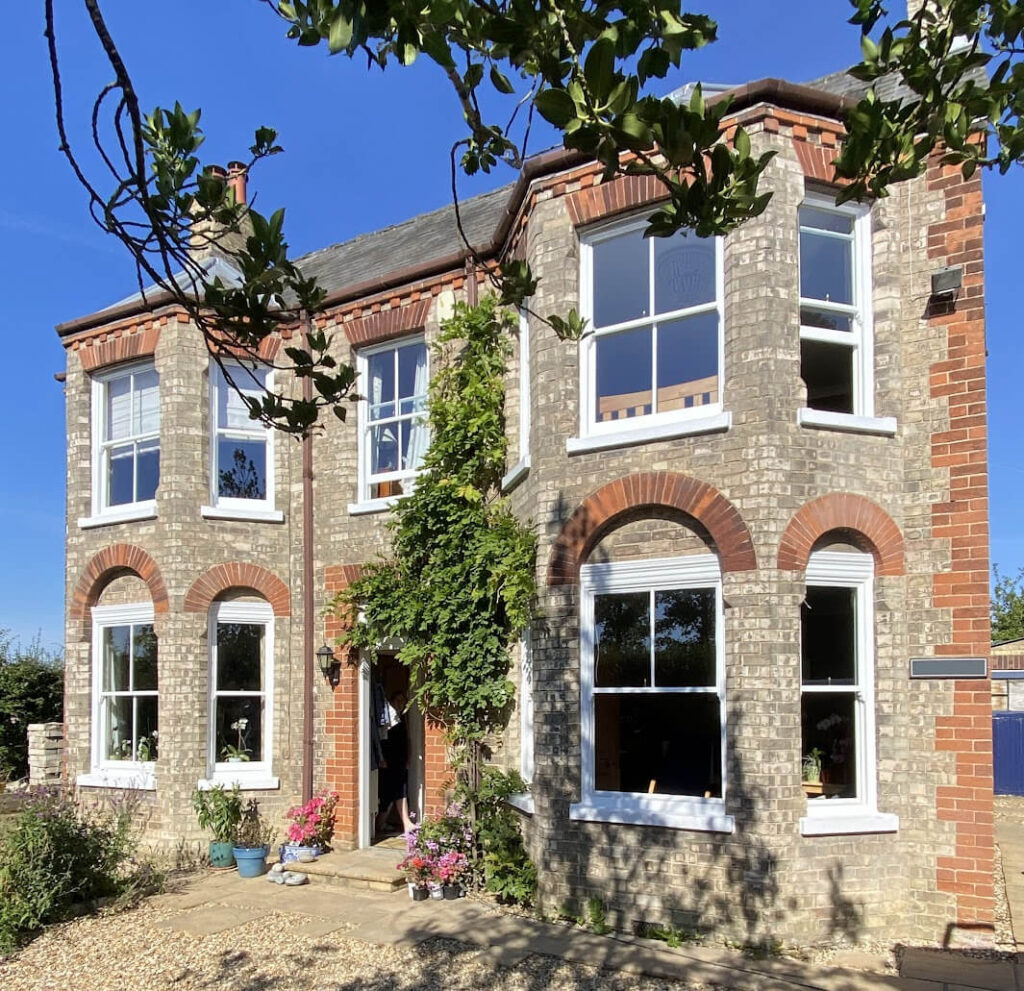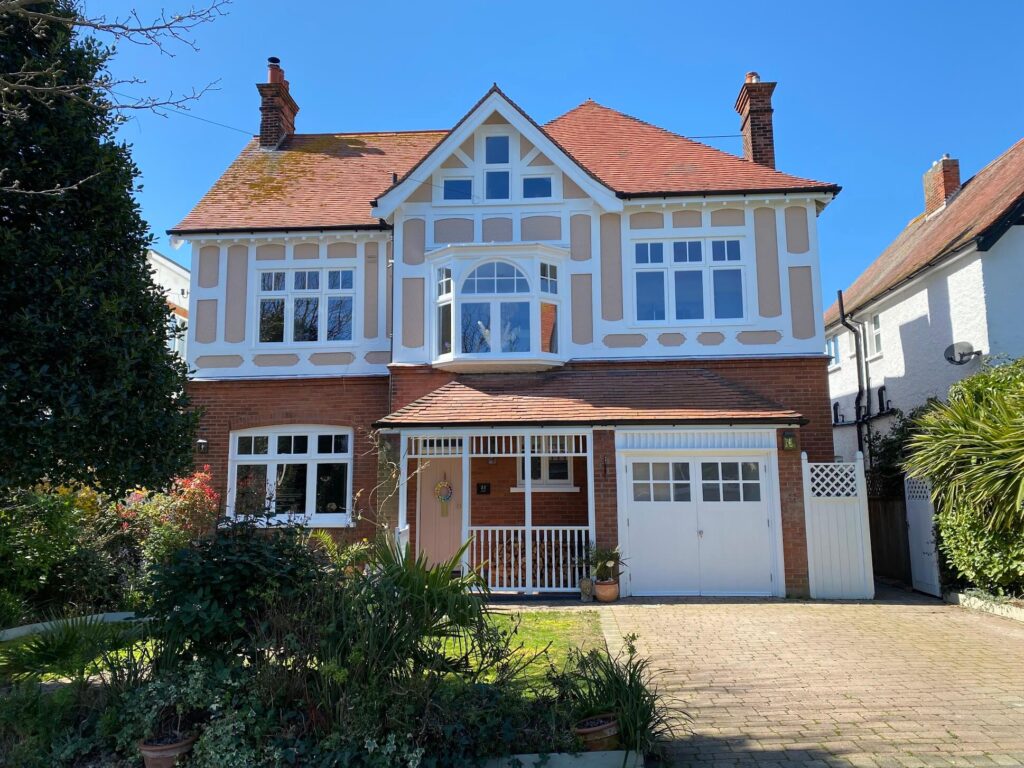
Secondary glazing Cambridge – Alternative solution
Our alternative secondary glazing service in Cambridge provides triple-glazing window insulation without the need for extra secondary framing.
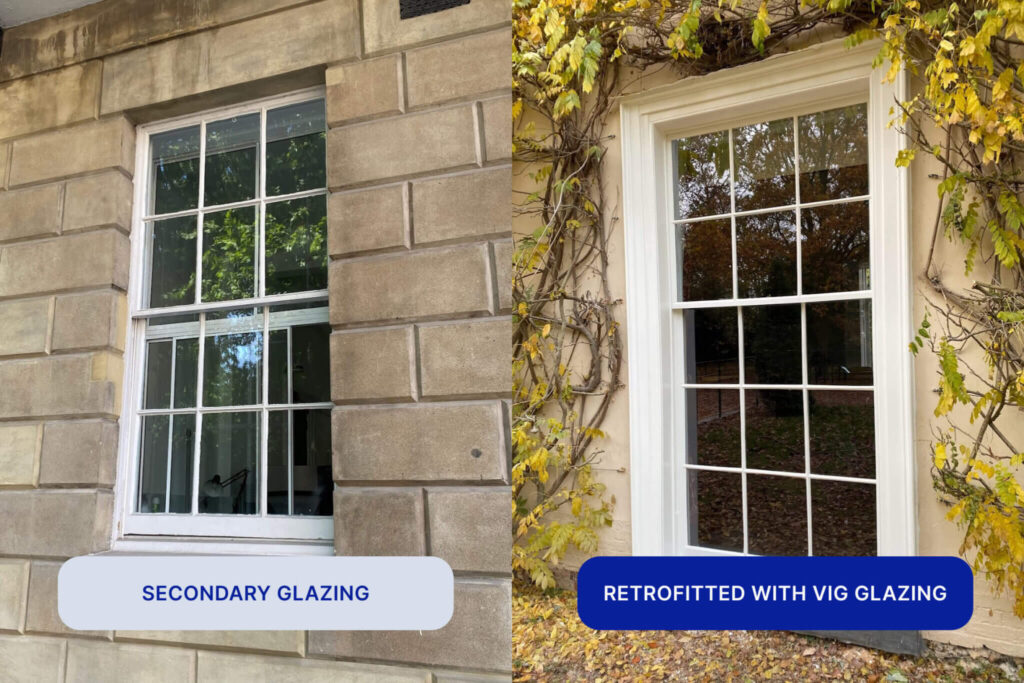
Vacuum Glazing: A Modern Solution for Window Upgrades
Vacuum glazing stands as an innovative substitute for all conventional secondary glazing techniques.
Our method involves integrating vacuum glazing into the existing sashes of classic sash windows.
The vacuum layer serves as a superior insulator, providing thermal and acoustic insulation benefits comparable to triple glazing, yet with significantly less bulk. This method preserves the window’s original look.
The vacuum layer serves as a superior insulator, providing thermal and acoustic insulation benefits comparable to triple glazing, yet with significantly less bulk. This method preserves the window’s original look.
This technique is especially advantageous for historic buildings or those in conservation areas, where maintaining the original aesthetic is of utmost importance.
Vacuum glazing strikes a perfect harmony between retaining the charm of traditional windows and meeting contemporary insulation and energy efficiency standards.
This upgrade is a non-intrusive enhancement that boosts both the comfort and value of your property while upholding its architectural heritage.

Horizontal Sliding

Lift Out

Hinged / Fixed

Vertical Sliders
Evaluating Glazing Options
Assess the distinctions between sash window secondary glazing and our double-glazing retrofit service.
In contrast to secondary glazing, the retrofit approach for double glazing ensures that the window’s original functionality is retained, eliminating additional maintenance or cleaning requirements.
Moreover, double-glazing retrofitting presents a more cohesive and visually appealing option, safeguarding the window’s authentic appearance while incorporating the advantages of contemporary vacuum-glazing technology.
Our stance is that double-glazing retrofitting stands as the optimal choice for residential settings, particularly appealing to homeowners who desire the efficiency and visual appeal of triple-glazing systems.
Explore the unique features of each glazing method below:
Appearance
Add second framing from the inereor side
Look sleek as orginal window.
Listed builsing approval
Does not need a permission
90% approval rate
Thermal insulation
1.7 W/m²K – 2.7W/(m²K)
0.48 – 0.7W/(m²K) same as triple glazing
Noise reduction
30dB – 45dB Depending on air gap between the existing primary window and the new secondary glazed unit.
35 dB – 39 dB
Cost (Materials and installetion)
£500 – £2200 By installing secondary glazing, you will need to allocate a separate budget for sash window maintenance, whereas reglazing encompasses the cost of sash window refurbishment.
£1500 per avarage window Price includes window frame restoration, draught-proofing, VIG glass cost of production and installation, painting.
Cost of refurbishing existing window frames
no included in secondary glazing price
Included in the price
Light transmission
75%-90%
78% – 79%
Security
Additional glazing adds additional security.
Toughened glass
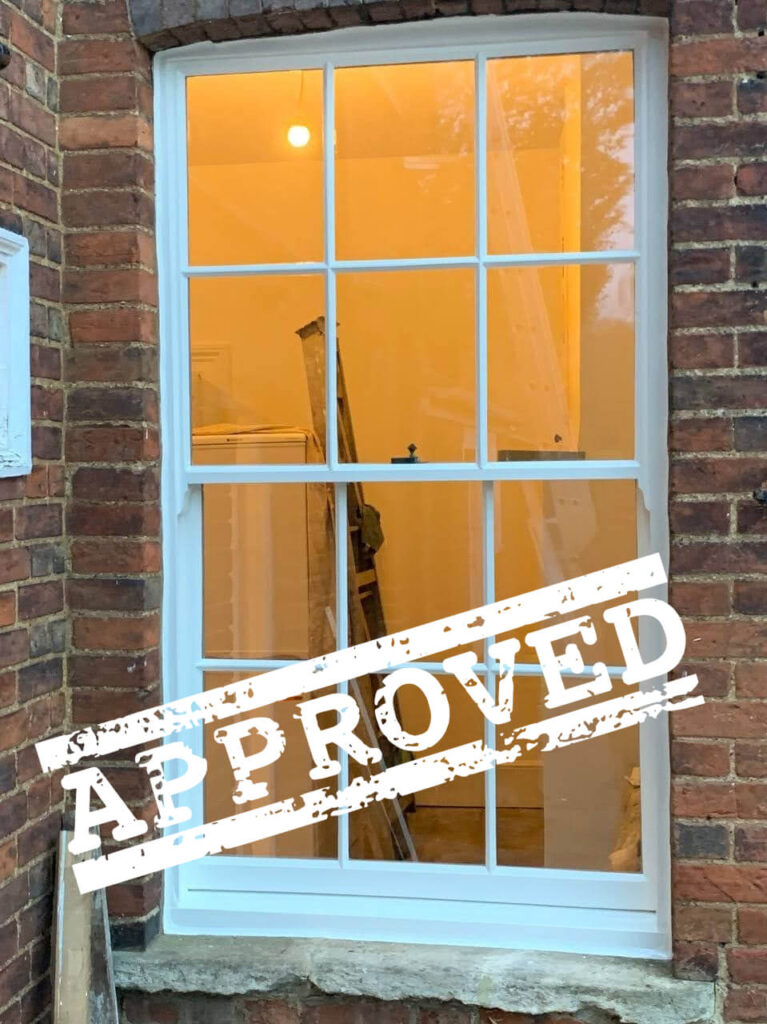
Effective glazing solutions for Grade 2 Listed and conserve area buildings
The success rate for obtaining permission to replace window glass in listed buildings is remarkably high, with approvals exceeding 90%.
This impressive approval percentage is attributed to our window replacement service’s adherence to the standards and regulations specific to listed buildings.
Key features of our service that align with these heritage standards include:
- We preserve the original Georgina glazing bars while fitting new glass in.
- Utilization of VIG glazing, notable for its slim profile, allowing integration into current window sashes.
- Vacuum glazing is renowned for its durability, with a lifespan exceeding 25 years.
- Comprehensive restoration of wooden frames is part of the reglazing process.
Guarantees
An extensive guarantee covers all elements of our reglazing service, providing peace of mind.

Guarantee on paintwork

Guarantee on VIG glazing

Guarantee on repairs made with Accoya
How much does it cost?
Upgrading classic sash windows with toughened (5x stronger than regular glass) vacuum-insulated glass (VIG) for double glazing typically comes at an approximate cost of £1700 per window.
Breaking down the expenses, the VIG glass and reglazing services amount to £800.
Draught-proofing ranges between £300 and £360, while rejuvenating and painting the window frame and sashes costs around £600.
This comprehensive pricing encompasses the installation of VIG, draught-proofing, and complete refurbishment of both the frame and sashes.
This often aligns with or even falls below the pricing for high-quality secondary glazing solutions for heritage structures.

What’s included in our double glazing service in Hertfordshire
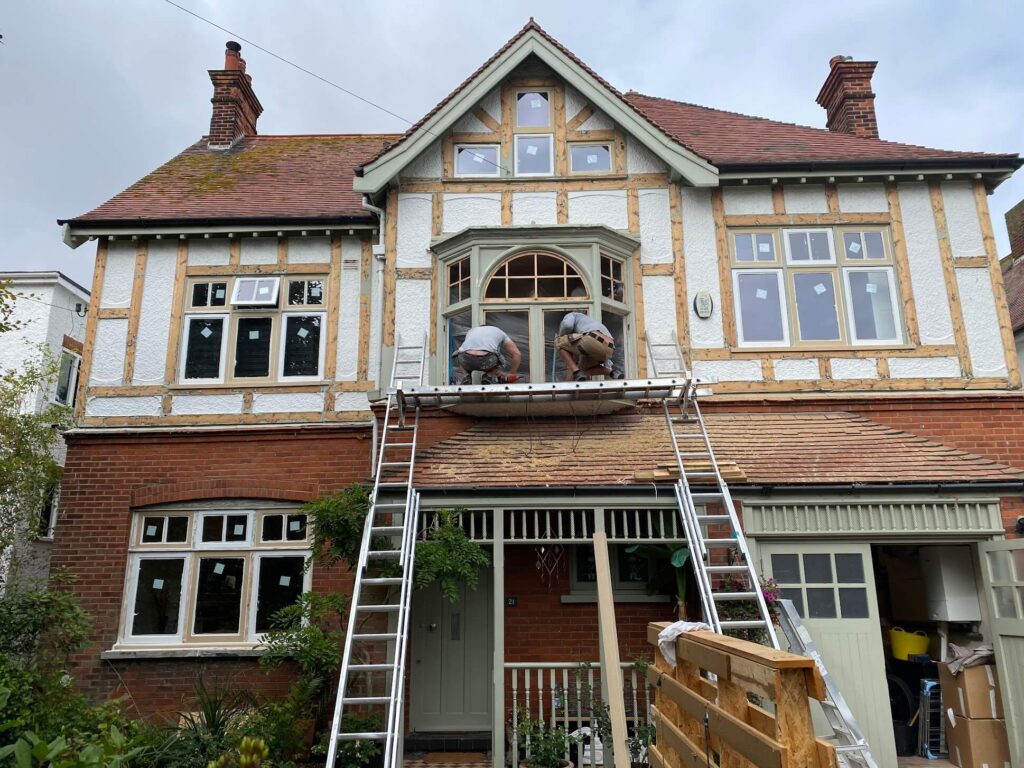
Double glazing retrofitting
Supply and installation of Vacuum Double-Glazing
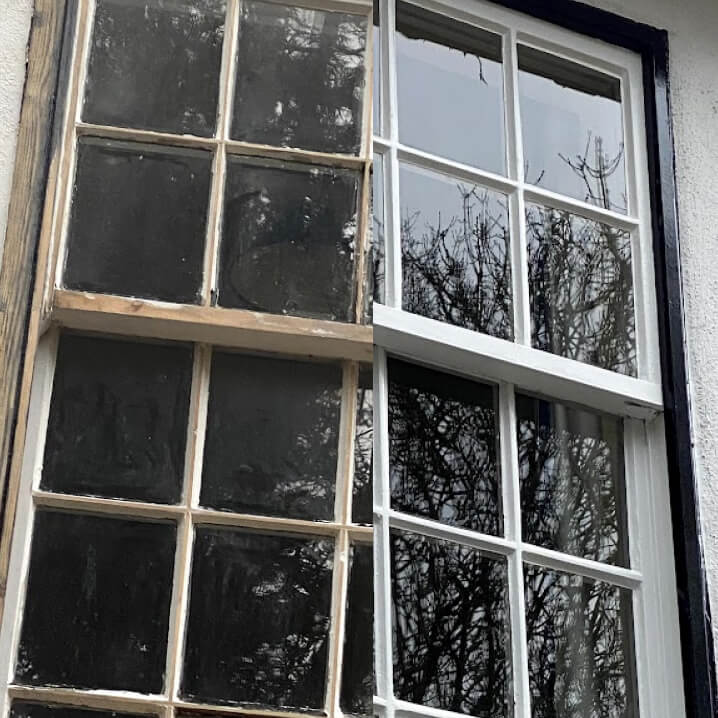
Window frame restoration
Restoration and rot repair for window frames and sashes
Explore the Remarkable Efficiency of Vacuum Glazing
Our thermal imaging photos showcase the exceptional performance of vacuum-insulated glass installed in wooden windows.
Notice the minimal heat loss, demonstrating the superior insulating properties of VIG glass.
These images vividly illustrate how VIG glass transforms traditional windows into energy-efficient marvels, ensuring your comfort while reducing energy costs.
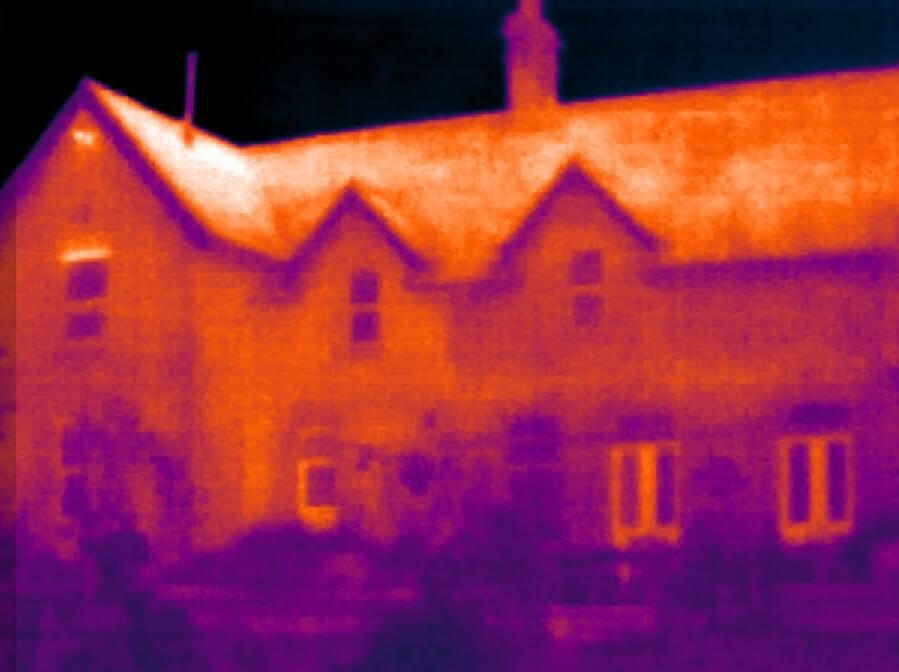

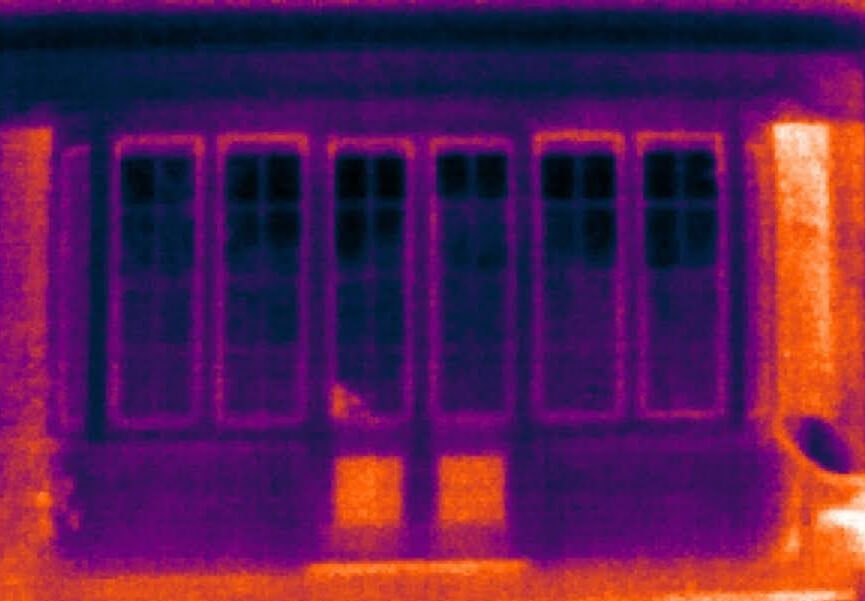
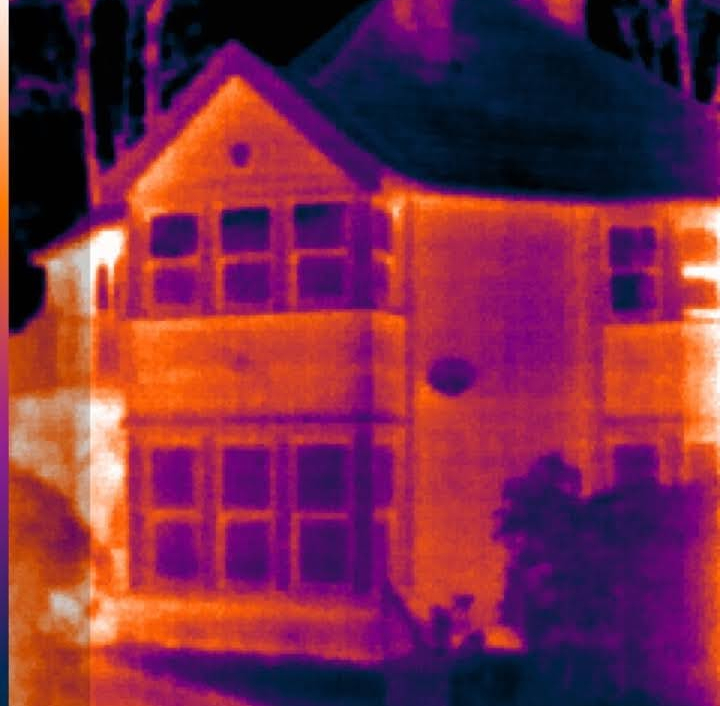
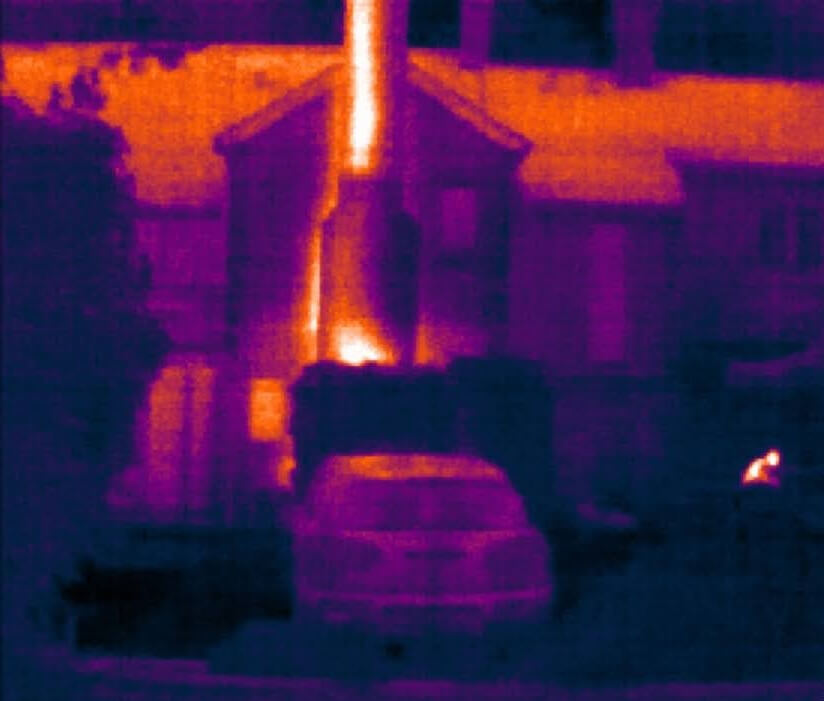
Customer testimonials
Installation process
The production of custom-made vacuum glazing units may take up to 6 weeks.
VIG glass necessitates high-tech machinery, which only a select few companies possess and operate.
Once the glazing is produced and delivered, we will contact you to schedule the installation.
Although vacuum glazing may take longer to install compared to secondary glazing, the end result will be well worth the wait.
Past projects


Sash windows restoration in West Essex

Double glazing Listed Grade 2 building
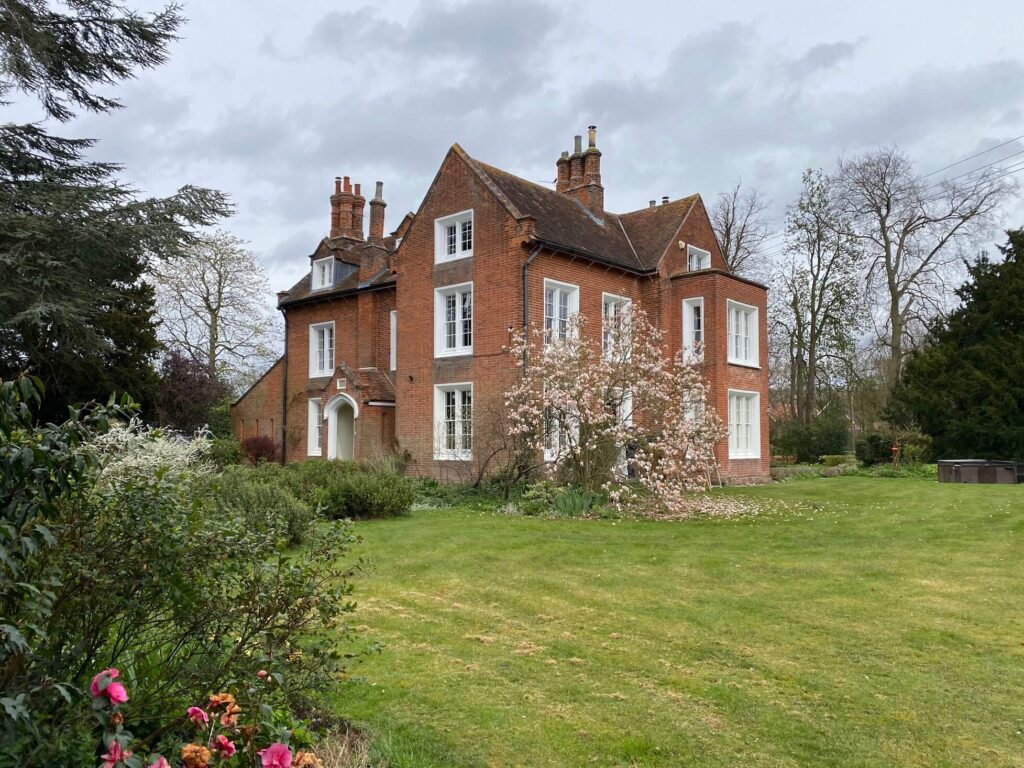
Retrofit double-glazing Essex
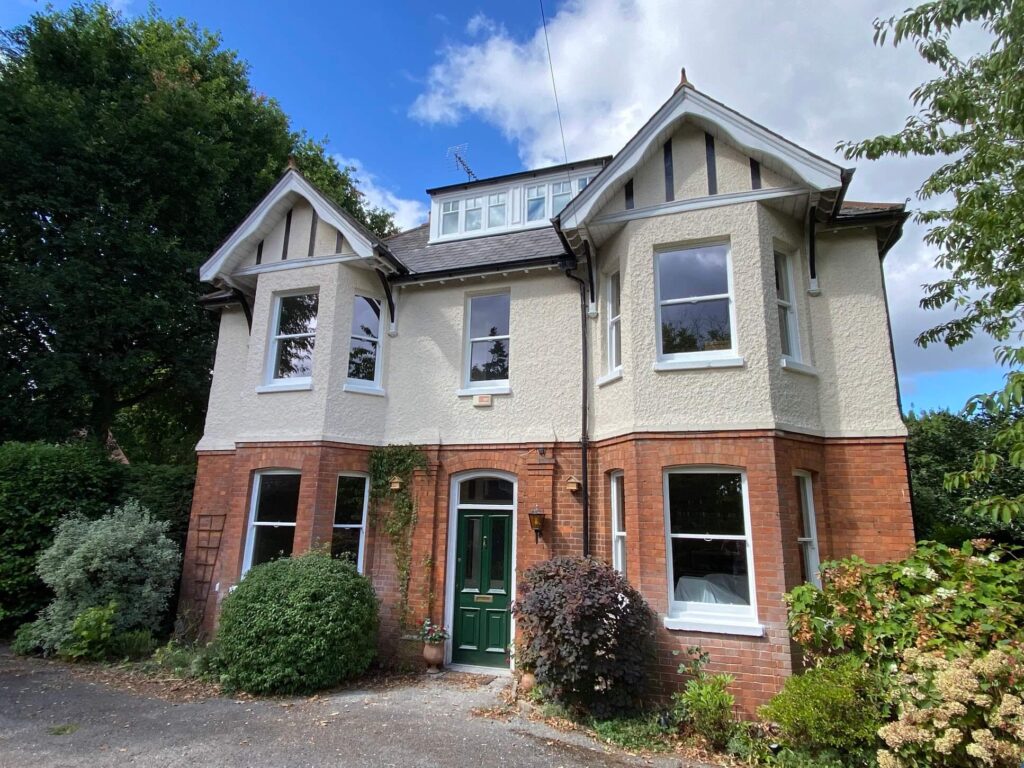
Reglazing timber windows Farnborough
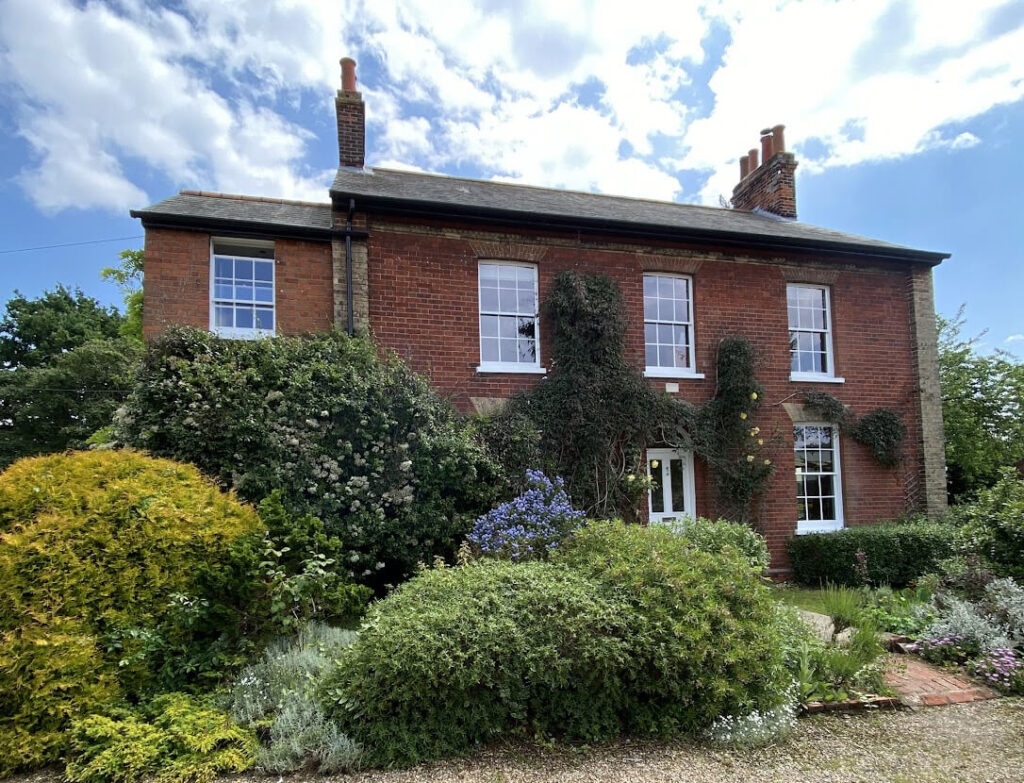
Reglazing sash windows in Alresford
FAQs
What is the difference between secondary glazing and double glazing retrofitting?
Secondary glazing adds a second glass layer inside your current window, slightly changing how it looks from the inside and offering some insulation. Double glazing retrofitting replaces your window’s single glass with a double-layered glass unit, keeping the window’s original style and improving insulation and noise reduction.
Is VIG glass suitable for Listed buildings?
Yes, it is, but planning permission is still required. The current approval rate is above 90%
What is the minimum gap for secondary glazing?
Typically, a distance of 100 to 200 millimetres (mm) is advised as the minimum separation for secondary glazing, crucial for enhancing both its thermal efficiency and noise reduction capabilities.
Yet, our specialized reglazing service eliminates the requirement for extra room behind your windows.
What is VIG glass?
Vacuum Insulated Glass (VIG) represents an advanced glazing technology, incorporating a vacuum space between dual glass layers. This design, by removing the air gap common in standard double-glazed units, substantially minimizes heat transmission via the glass.
Consequently, VIG excels in thermal insulation, offering equivalent or superior performance compared to traditional double or triple-glazed systems, yet with a more slender profile.
